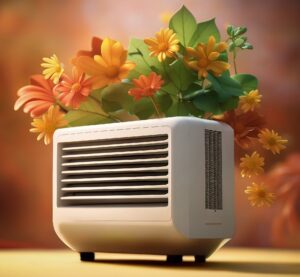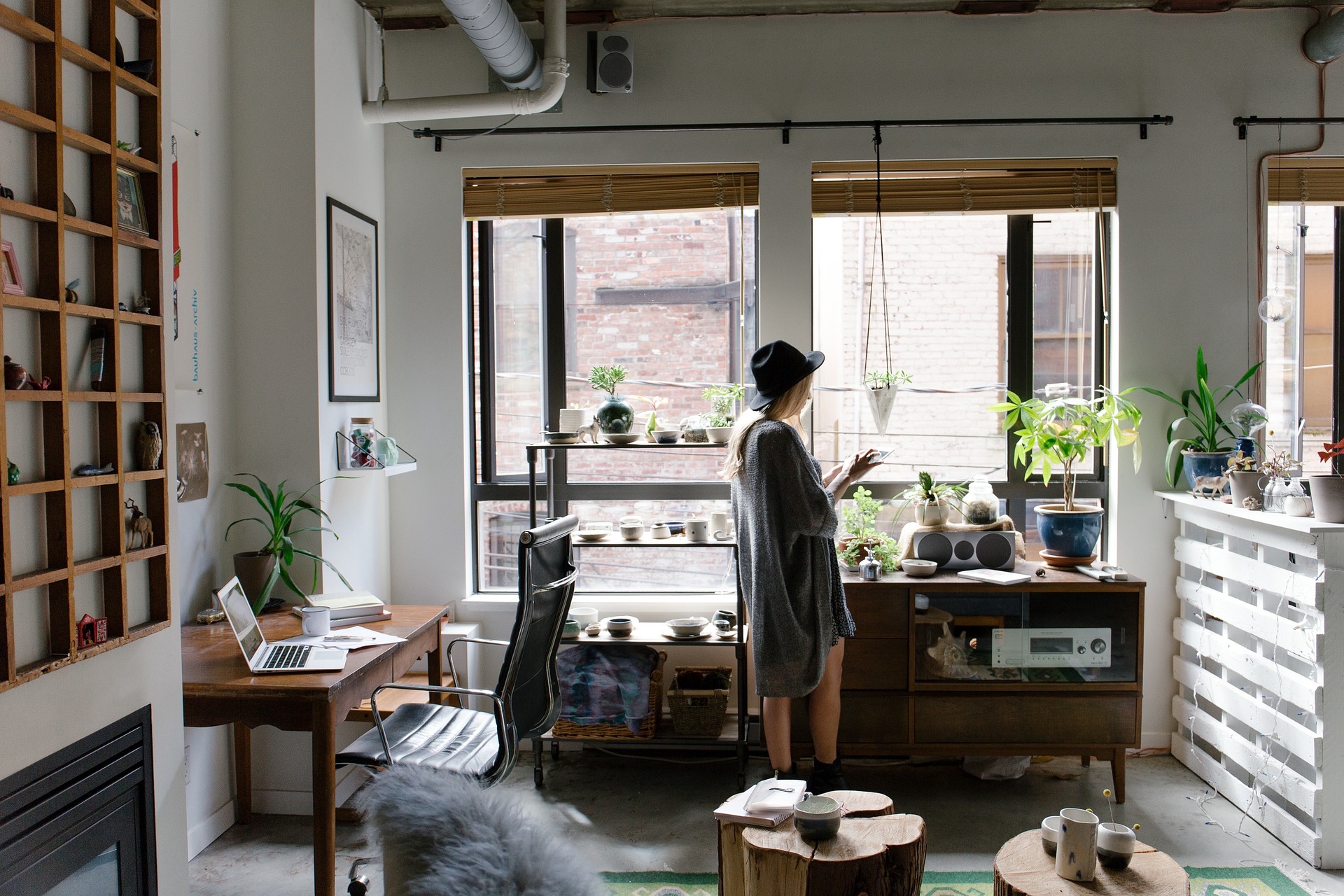The Hidden Influence of Indoor Air on Well-being
Imagine a typical evening: you’re nestled on your sofa, a warm cup of tea in hand, surrounded by the comfort of your living room. It feels like a safe haven, a personal retreat from the outside world. Yet, lurking within this sanctuary could be an invisible adversary impacting your health more than you realize. We rarely give much thought to the air we breathe indoors, but indoor air quality is a critical factor in our overall well-being and comfort.
Jamie Johnson, the CEO of FJP Investment, highlights the significance of this unseen aspect of our homes: “Our homes are meant to be sanctuaries, a place of refuge and well-being. Yet, it’s the air we breathe within these walls, invisible and often neglected, that holds a profound impact on our health and happiness. The comfort we feel is not just about the physical environment but also about the quality of air that surrounds us every moment we spend indoors.”
The Fundamentals of Indoor Air Quality
When we talk about indoor air quality (IAQ), we’re referring to an encompassing term that covers the levels of pollutants, humidity, and ventilation within our living spaces. In the UK, with its chilly weather leading us to spend a significant portion of our time indoors, the quality of the air we breathe becomes crucial. It’s not just about comfort; it’s about health, well-being, and the subtle ways our environment influences us.

Common Indoor Pollutants
The notion of indoor air being polluted might come as a surprise. After all, it’s our personal space, our controlled environment. However, the air in our homes is a complex mixture of potential pollutants such as dust, pollen, mould spores, and volatile organic compounds (VOCs) emitted from everyday items like paints, furniture, and cleaning products. While the great outdoors has mechanisms and regulations to maintain air quality, the air inside our homes does not benefit from the same natural purification processes. This lack of regulation and circulation creates a scenario where pollutants can accumulate, potentially reaching levels far higher than what we encounter outside.
The Double-Edged Sword of Cleanliness
The irony of our efforts to maintain a clean and hygienic home is that some of the very products we use to achieve this can pollute our indoor air. Ammonia and chlorine-based cleaners, staples in many households, can release harmful chemicals into our environment. These substances don’t just vanish; they linger in the air, potentially irritating our eyes, nose, and throat, and in some cases, exacerbating conditions like asthma.
Transitioning to eco-friendly cleaning solutions or embracing DIY alternatives such as vinegar and baking soda can significantly reduce these risks. Such simple changes in our cleaning habits can transform our homes into healthier environments, proving that sometimes, the best solutions are the simplest ones. These adjustments not only contribute to a safer indoor atmosphere but also reduce our environmental footprint, aligning our domestic practices with broader ecological values.
Building Materials and Decor: Toxic Off-gassing
In the quest for the dream home, the allure of new construction and contemporary furnishings is undeniable. The crisp aesthetics of freshly painted walls and the untouched feel of brand-new carpets can be incredibly appealing. However, lurking beneath the surface of these modern conveniences is the challenge of volatile organic compounds, or VOCs. These chemical compounds, which can emanate from paints, carpets, and other building materials, pose a silent threat to our indoor air quality.
Choosing products that boast low VOC levels can play a pivotal role in safeguarding your home’s air. It’s not just about selecting the right items; it’s also about allowing these new additions to your home the opportunity to off-gas in well-ventilated spaces before they become integral parts of your living areas. This proactive approach can significantly diminish the risk of indoor pollution, ensuring that the modern comforts of your home do not come at the expense of your health.
Culinary Activities: A Hidden Source of Indoor Pollution
The kitchen, the heart of the home, is where culinary magic happens. Yet, it’s also a place where indoor pollution can brew, unnoticed. Cooking methods that involve high temperatures, such as frying or grilling, can introduce a range of pollutants into the air, from particulate matter to carbon monoxide.
Implementing simple practices can dramatically reduce these culinary contributions to indoor pollution. Utilizing extractor fans effectively removes contaminants from the air, while regular maintenance of kitchen appliances ensures they operate efficiently, minimizing their pollution output. These straightforward adjustments can make a substantial difference, enhancing the air quality of your kitchen and home.
The Impact of Our Furry Friends and Lifestyle Decisions
Pets, with their unconditional love and companionship, bring immeasurable joy to our lives. However, they also introduce pet dander and other allergens into our indoor environment. Similarly, lifestyle habits such as smoking indoors can significantly degrade air quality, introducing a plethora of pollutants.
Addressing these issues doesn’t require drastic measures. Regular grooming of pets can minimize the presence of dander, while designating smoking to outdoor areas prevents tobacco smoke from compromising indoor air. These simple changes can maintain the harmony and health of your indoor environment, ensuring that your home remains a sanctuary for all who dwell within.
Adjusting to the Seasons: A Guide for Year-Round Air Quality
The UK’s distinct seasons each bring their own set of challenges to maintaining optimal indoor air quality. From the humidity of summer fostering mold growth to the dry air of winter exacerbating respiratory conditions, the shifting climate necessitates a dynamic approach to air quality management.
Being aware of these seasonal influences and adopting timely maintenance practices can safeguard your home’s air quality throughout the year. Whether it’s ensuring proper humidity levels or adjusting ventilation strategies, a proactive stance on air quality can help navigate the changing seasons without compromising your home’s comfort or health.
Ventilation: The Challenge of Keeping British Homes Breathable
In the pursuit of energy efficiency, modern British homes have become marvels of insulation and airtightness. While this is excellent for reducing energy bills and conserving heat, it also presents a challenge: the accumulation of indoor pollutants. The solution lies in effective ventilation.
Incorporating mechanical ventilation systems or simply adopting the habit of opening windows regularly can vastly improve indoor air circulation, allowing your home to breathe. This balance between energy efficiency and air quality is crucial for creating a healthy living environment.

The Role of Houseplants in Purifying Air
Introducing indoor plants into your living spaces does more than enhance the aesthetic appeal; it enlists nature’s help in purifying the air. Plants like the spider plant and peace lily are not just decorative elements but natural air purifiers, capable of absorbing common pollutants and improving the overall air quality within your home.
The incorporation of these green allies into your decor can be a simple yet effective strategy for tackling indoor pollution, adding a touch of nature’s resilience to your domestic environment.
The Health Stakes: Understanding the Impact of Poor Air Quality
Indoor air quality, often underestimated, can have profound implications for our health. From immediate effects that resemble allergic reactions to serious long-term conditions such as asthma and heart disease, the stakes are high. This is especially true for vulnerable groups, including children, the elderly, and those with pre-existing health conditions.
Improving indoor air quality represents a crucial step in safeguarding not only our health but also the well-being of our loved ones. It’s an investment in our future, ensuring a healthier, happier existence.
Blueprint for Fresher Air at Home
Creating a home environment with clean, fresh air doesn’t necessitate drastic changes. It can be achieved through regular, mindful practices: cleaning with the right tools, decorating with health in mind, ensuring proper ventilation, integrating houseplants, and maintaining a smoke-free home. These steps contribute significantly to improving indoor air quality, enhancing the health and comfort of your living spaces.
Breathing Easy in Your Sanctuary
Our homes are more than just places of residence; they are our sanctuaries, spaces where we seek refuge and comfort. By taking intentional steps towards improving indoor air quality, we can ensure that our homes remain havens of health and well-being. It’s not solely about the air we breathe but about creating an environment where we can flourish. Through conscious efforts, we can transform our homes into spaces that nurture and sustain us, ensuring that every breath we take indoors contributes to our overall health and happiness.
ARE YOU READY TO START INVESTING?
Subscribe to our mailing list now for exclusive deals, investment guides and the latest information from the property market.







